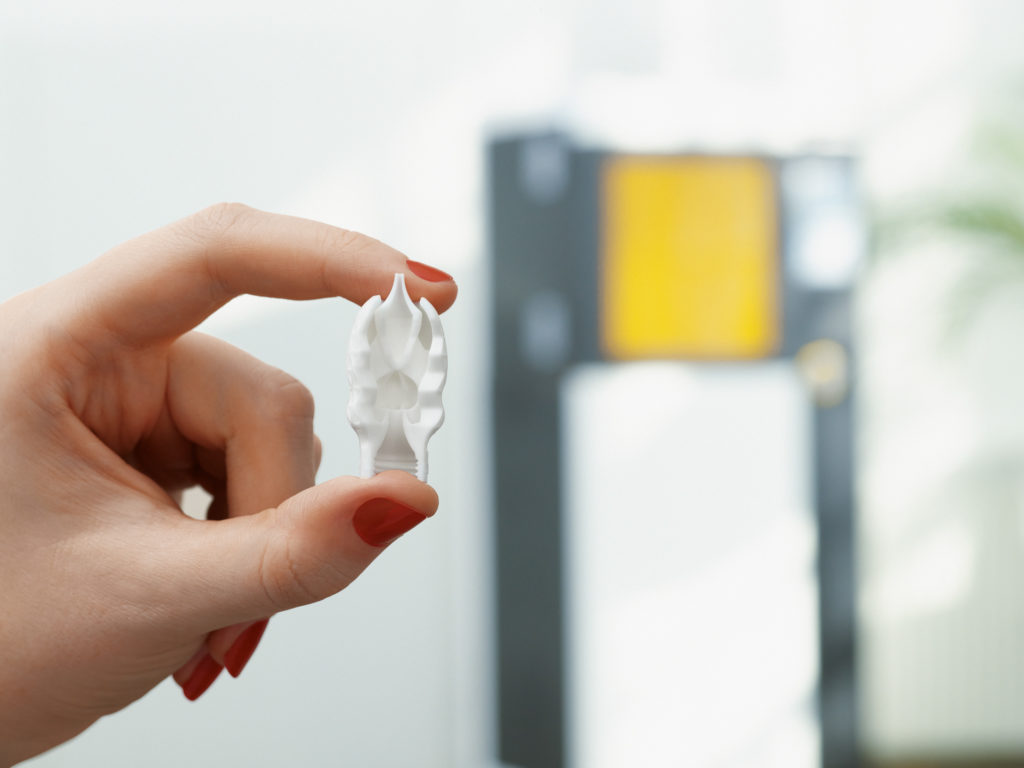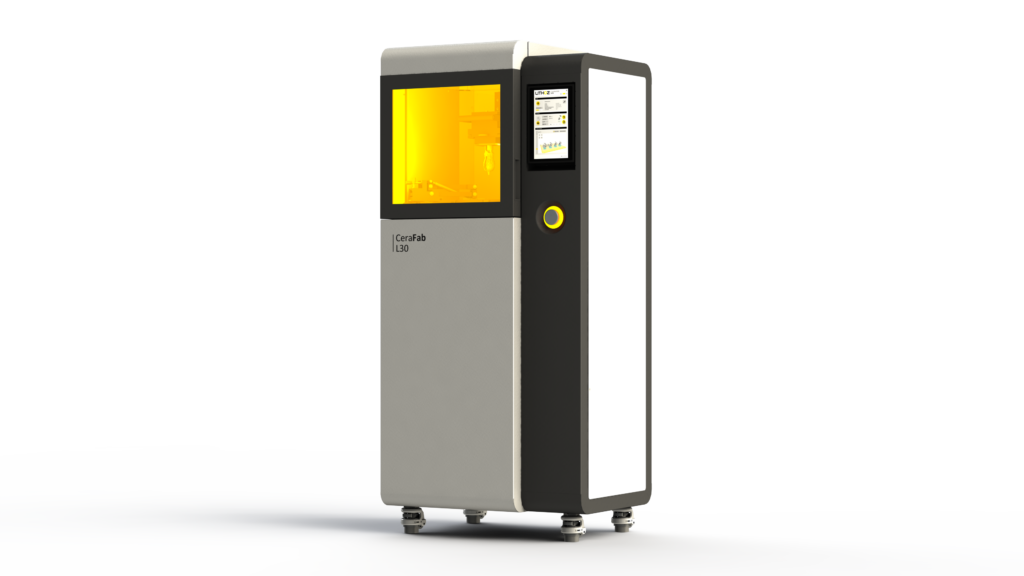Lithoz has been commercializing the 3D printing of ceramics for 10 years. Also an AM Ventures investment and, recently, involved in a pharma production solution for vaccines, the Austrian company has a CeraFab System for manufacturing, a CeraFab Multi for multi-material printing, and the CeraFab System Medical. Now, the company has introduced the CeraFab Lab L30, a new system for laboratories and “shop floors.”
Their machine is essentially an upgraded CeraFab 7500 which is a brilliant low-cost way to make a low-cost system available. The company’s motivation for this move is to make ceramics 3D printing more widely available and to have a lower-cost entry point to their technology, “as well as a solution for fine-tuning 3D-printed parts and designs.” The system is open and can use tiny batches up to 15 ml.

The LED-based printer features 50 µm resolution and uses Lithoz’s ceramic slurry-based technology, which dips a build platform in the slurry and then illuminates it from beneath using LED. Parts are subsequently debound and sintered. Technical ceramics, such as aluminum oxide, zirconia, silicon nitride and even beta-tricalcium phosphate, are amazing, high-performance materials. But, ceramics are relatively unloved when compared to polymers and metals.
These materials offer high heat resistance, light weight, high hardness, and good compression strength, as well as wear, corrosion and chemical resistance. Ceramics keep on ticking when a lot of other materials stop working. When metals start to melt and polymers have long since caught fire, ceramics continue performing. In this sense, ceramics are a material of last resort. Sadly, for our market, many engineers also see ceramics as a material of last resort and will only use the material if they absolutely have to. With relatively little knowledge on ceramics available and with few trained on how to use them, they are mostly avoided. It’s a shame because these materials can be very beneficial for 3D printing.

For items such as end effectors, cutting tools, dies, mold tooling, any kind of wear surfaces, or for use in electrical applications or in caustic places, ceramics are ideal. They could be used much more widely in food, pharma, chemicals processing, and in machine building. In transport, they could provide us with optimized components that could significantly outperform today’s materials because they are so hard wearing and hard ceramics have been costly and difficult to machine. For new applications, such as antenna or for use in space, ceramics have a lot of exciting places to go and grow, as well.
Lithoz has done pioneering work in 3D printing ceramics and has been joined by fellow travelers, of late. Steinbach was an early customer and, through their services, many were introduced to 3D printed technical ceramics. Admatec has a very similar technology using slurries and makes investment casting shells, as well as bioabsorbable bone implants on its Admaflex systems, which use DLP and feature a modular architecture. Another similar technology is Holo AM, which is focused on using slurry-based DLP to tackle the heat sink market by making millions of copper heat sinks per year.
A different ceramics technology is Xjet, which has also happened upon a potential million parts use case. This one is in medical, for an ablation nozzle for targeted breast cancer treatment (still one of my favorite 3D printing use cases). On the democratization side, Nanoe‘s Zetamix line of ceramic filaments means that anyone with a debinding and sintering unit and an FDM printer can print ceramics. Similarly, The Virtual Foundry offers ceramic 3D printing filament, as well, but don’t require debinding. Technically speaking the HP, ExOne, GE, and Desktop Metal binder jet efforts could also be directed towards some ceramics parts potentially.
All in all, this is a key moment in ceramics 3D printing. Long thought of as backwaters for 3D printing, additive manufacturing of ceramic RF sensors, antennas and specific medical devices are turning ceramics AM into a real manufacturing technology. In ceramics itself, 3D printing was also long considered to be a novelty, but now the Kyocera’s of the world will certainly take note.
Subscribe to Our Email Newsletter
Stay up-to-date on all the latest news from the 3D printing industry and receive information and offers from third party vendors.
Print Services
Upload your 3D Models and get them printed quickly and efficiently.
You May Also Like
Nikon SLM Solutions Sells SLM 500 to Primary Weapon Systems to Expand Suppressor Production
Primary Weapons Systems (PWS) is a Boise, Idaho-based manufacturer of suppressors, firearms, and related components. A subsidiary of Vigilant Gear and a sister company to aftermarket Glock slide manufacturer Lone...
3DPOD 261: Tooling and Cooling for AM with Jason Murphy, NXC MFG
Jason Murphy´s NXC MFG (Next Chapter Manufacturing) is not a generalist service; instead, the company specializes in making tooling. Using LPBF and binder jet, the company produces some of the...
HP and Firestorm Labs Form Partnership to Use Multi Jet Fusion 3D Printers in Deployable Factories
HP Inc., maker of a range of additive manufacturing (AM) solutions including the Multi Jet Fusion (MJF) ecosystem, has announced a partnership with Firestorm Labs, a developer of containerized, deployable...
3D Printing News Briefs, July 2, 2025: Copper Alloys, Defense Manufacturing, & More
We’re starting off with metals in today’s 3D Printing News Briefs, as Farsoon has unveiled a large-scale AM solution for copper alloys, and Meltio used its wire-laser metal solution to...
































